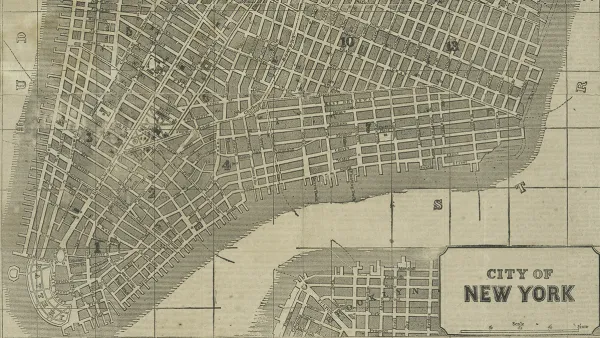Municipal comprehensive plans are neither necessary nor sufficient for smart growth.
A few months ago, I argued in a blog post that comprehensive planning (which I define narrowly as municipal comprehensive plans that override zoning codes)* is not sufficient to limit sprawl, because some cities' comprehensive plan provisions in fact promote automobile-dependent sprawl. In my post, I cited comprehensive plan provisions that promote single-use zoning, low density, and streets that are too wide to be safe for pedestrians.
It could be argued, however, that even if comprehensive planning is not sufficient to limit sprawl, it is in fact necessary to limit sprawl. But I doubt that this is the case, because many smart growth policies can be implemented either through local zoning codes or through statewide legislation.
The policies discussed in my earlier post provide excellent examples. Single-use zoning might make it harder for people to live within walking distance of shops and jobs. It is certainly possible that a local comprehensive plan could turn single-use zones into mixed-use zones- but a form-based code, or even a local zoning code amendment, could do the same thing. Similarly, statewide legislation could limit municipalities' power to engage in single-use zoning.**
Low-density zoning makes single-use zoning more oppressive, by ensuring that only a few people can live within walking distance of public transit or commercial streets. A city can reform such zoning without making comprehensive plans binding, or even without writing a comprehensive plan. For example, a city could in theory amend its zoning code to eliminate density regulation altogether. A city committed to more moderate reform can raise the maximum density in its lower-density zones to levels high enough to support regular bus service, and can raise the maximum density in its higher-density zones to levels high enough to support regular rail service. Similarly, statewide legislation could limit municipal power to regulate density.
My sense from reading a few codes is that cities typically address street design in subdivision regulations. These regulations can also be reformed even in the absence of a comprehensive plan; just as current subdivision regulations might favor six-and eight-lane streets, a smart growth subdivision regulation might limit commercial streets to three or four lanes.
In sum, comprehensive plans are just a procedural tool for regulating land use. Thus, many substantive goals that a city can achieve through plans can also be achieved through direct reform of zoning codes or through statewide legislation that limits municipal discretion.
Now, of course, one might argue that it is politically impossible to reform zoning codes or statewide zoning enabling laws. But if that's true, won't it be equally impossible to reform comprehensive plans?
*On the other hand one could define comprehensive planning more broadly as any set of broad rules designed to govern specific land use decisions. I concede that by under this broader definition, planning is indeed necessary to achieve any policy goal.
**On the other hand, statewide legislation may be less easy to amend, and thus less flexible, than local laws. The desirability of such statewide action is best left for another post.

National Parks Layoffs Will Cause Communities to Lose Billions
Thousands of essential park workers were laid off this week, just before the busy spring break season.

Retro-silient?: America’s First “Eco-burb,” The Woodlands Turns 50
A master-planned community north of Houston offers lessons on green infrastructure and resilient design, but falls short of its founder’s lofty affordability and walkability goals.

Delivering for America Plan Will Downgrade Mail Service in at Least 49.5 Percent of Zip Codes
Republican and Democrat lawmakers criticize the plan for its disproportionate negative impact on rural communities.

Test News Post 1
This is a summary

Test News Headline 46
Test for the image on the front page.

Balancing Bombs and Butterflies: How the National Guard Protects a Rare Species
The National Guard at Fort Indiantown Gap uses GIS technology and land management strategies to balance military training with conservation efforts, ensuring the survival of the rare eastern regal fritillary butterfly.
Urban Design for Planners 1: Software Tools
This six-course series explores essential urban design concepts using open source software and equips planners with the tools they need to participate fully in the urban design process.
Planning for Universal Design
Learn the tools for implementing Universal Design in planning regulations.
EMC Planning Group, Inc.
Planetizen
Planetizen
Mpact (formerly Rail~Volution)
Great Falls Development Authority, Inc.
HUDs Office of Policy Development and Research
NYU Wagner Graduate School of Public Service






























